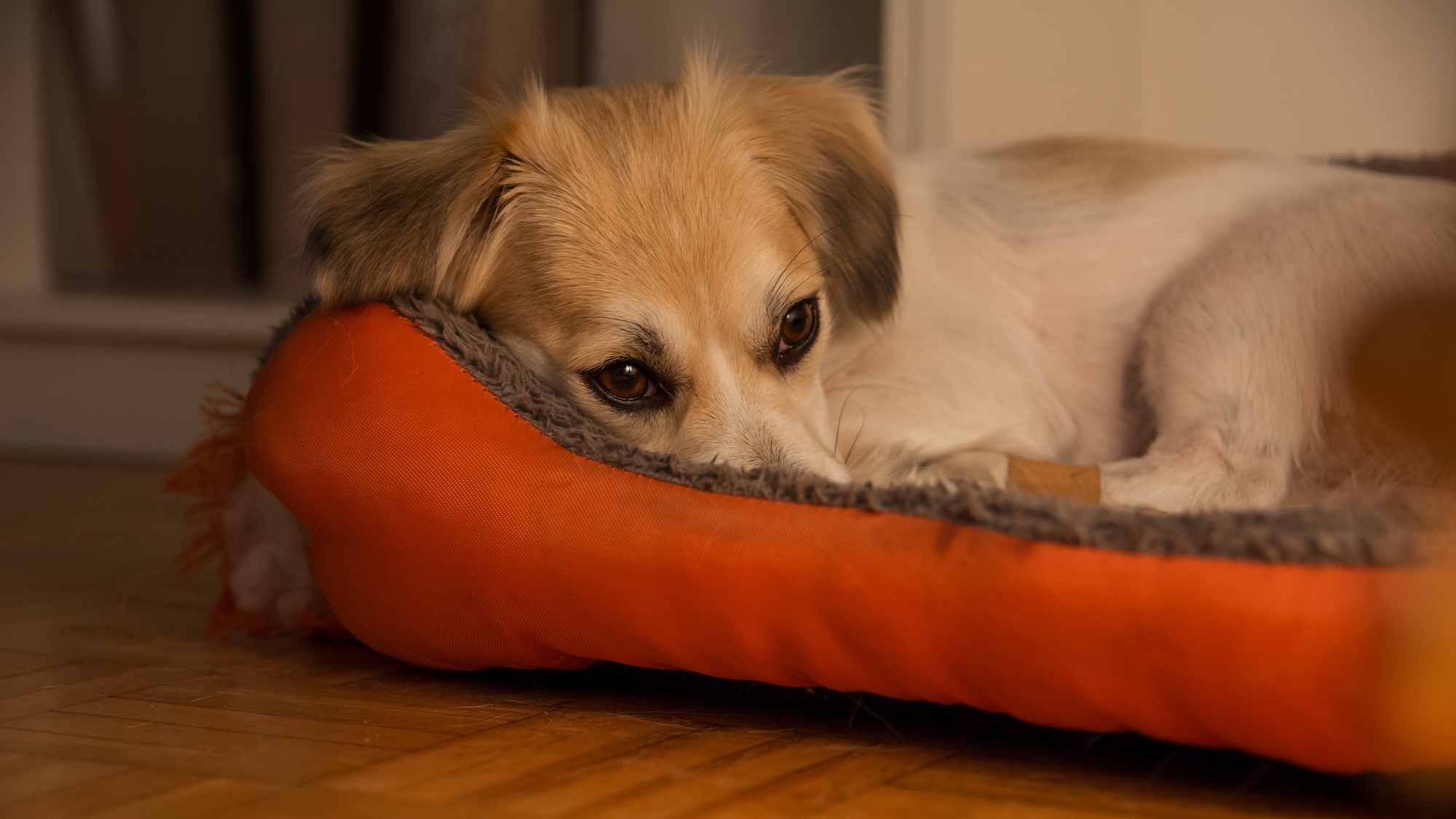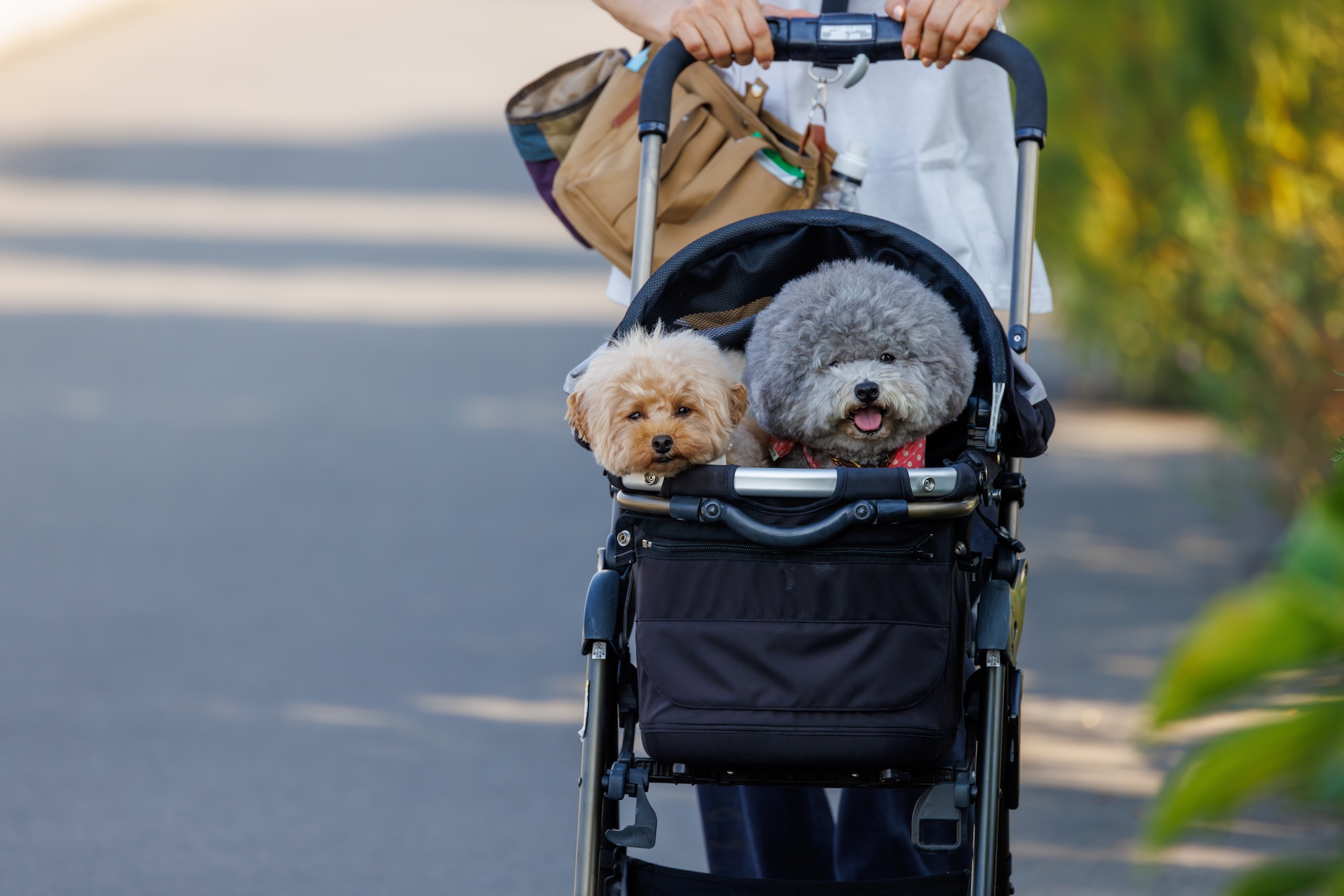A man shouts to his dog, whom he can see playing in the distance. “Come here! Hey, Buddy! Hey hey hey! Buddy! Come here! Come to papa! Please!” His voice becomes hoarse, but the dog doesn’t turn to listen, let alone come back. The sun begins to set on the horizon. Witnesses swear they can see stubble growing on the man’s face.
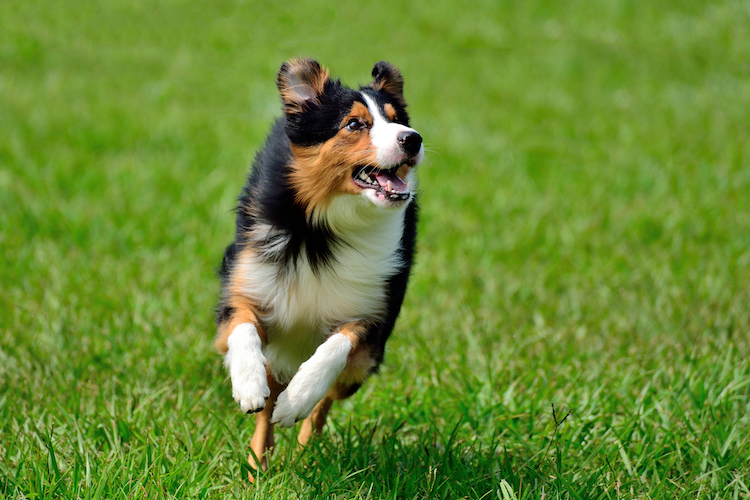
You may have seen this sad soul in the park, and you may relate to him. Pleading with your dog to run back to you, only to have them hit “ignore” on your call, can be a dispiriting experience. More important than that, it can also be dangerous. That’s why recall—dependably returning to you when asked—is one of the most valuable skills you can teach your dog.
Even if you never intend to spend time with your dog off leash in the great outdoors, a reliable recall will serve both of you in countless ways. It can be a lifesaver if your dog ever escapes their collar or bolts from your front door; it can help extricate them from trouble at the dog run; and, even indoors, getting your dog to pay attention and come to you when you want them to is handy and can set a foundation for many other skills. It takes work, especially when the distractions are compelling—but, with some effort, you may entice your dog to come galloping back your way almost any time you ask them to.
A word of caution, though: pay attention to that “almost.” Dogs, like people, will never be fully predictable. Even if your dog seems trained, there’s always a chance that they’ll come up against a strange set of circumstances and won’t respond to your cue. You’ll have to weigh the risks and rewards of letting them off-leash in certain situations. If your dog’s refusal to come back would be disastrous, it’s not a good time to let them off leash.
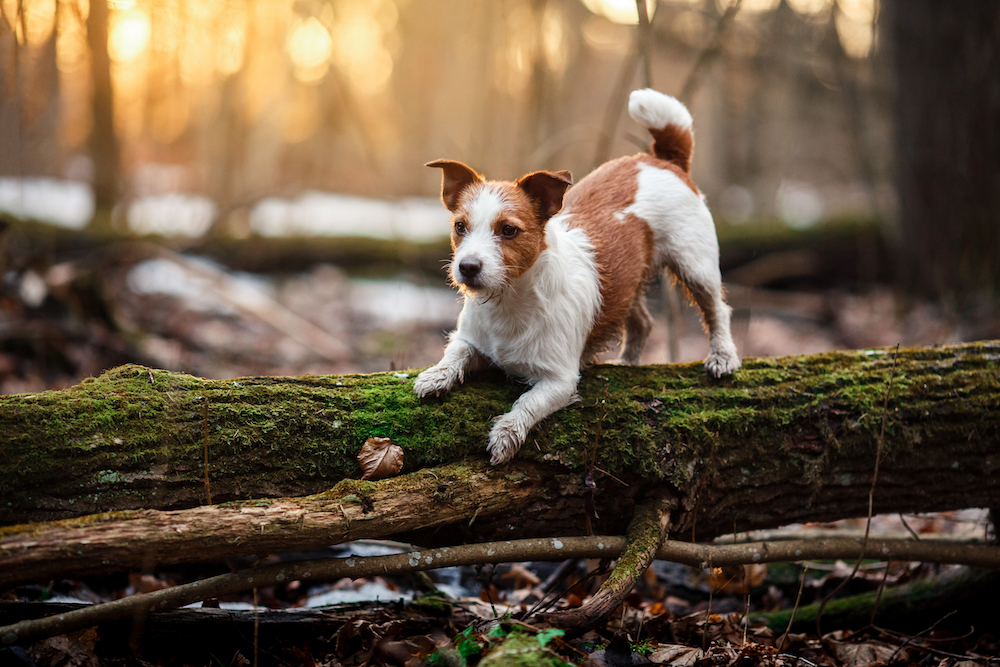
Start early, and start simple
You can’t expect your dog to learn recall on the fly in an environment with tons of interesting distractions. You should start in a controlled environment where the stakes are nonexistent. Begin the lessons in a quiet room of your own home.
Learning recall should be fun for your dog.
“The very first step is you want to build a good association with the word,” says Emily Keegans, Chief of Animal Behavior at Seattle Humane. To do this, she starts by saying the word she’ll use as a cue—“come,” for example—and rewarding the dog for what seems like no reason at all. “One of my dogs’ names was Magnet,” she says, “so I would just go: ‘Magnet, come’ and then give him a treat.” You can start this way, or call your dog from a few feet away. But it should be very easy. “The idea at first is to make it so easy that they’re going to be 100% successful,” says Keegans, “and they’re going to start to learn: ‘the word means great stuff is going to happen for me.’” Behaviorist Kathy Sdao has written that, at first, it’s best to use this cue as “not as a command but as a prediction”—to say it when your dog is already moving toward you, or when you know that nothing will distract them from following it.
The goal is for your dog to be sure that the cue is good news. That way, when they’re faced with the intriguing attractions of the outdoors, they’re still likely to drop everything and speed your way when they hear it.
“I had some clients who were having a lot of problems with their two Jack Russells not coming when called,” Keegans remembers. Picking the right recall cue made training easier. “They had a little kid,” she says, “and after he would eat his food at his high chair, there would be food all over the floor, and the mom would yell out: ‘dog, vacuum!’ And no matter where they were in the house, and even if they were out in the yard barking at a squirrel, when they heard the word “vacuum,” the dogs came running.”
A key here is consistency: choose a cue and stay with it. And, during training, only say it when you’re confident that your dog will come to you.
To get the lesson to stick, use high-value treats. Some humans have been known to mix in pieces of cooked meat to get the message across that “when you come to me, great things happen to you.” Make sure that you’re responsible about calories—treats count in your dog’s total food intake for the day—but choose items that your dog loves.
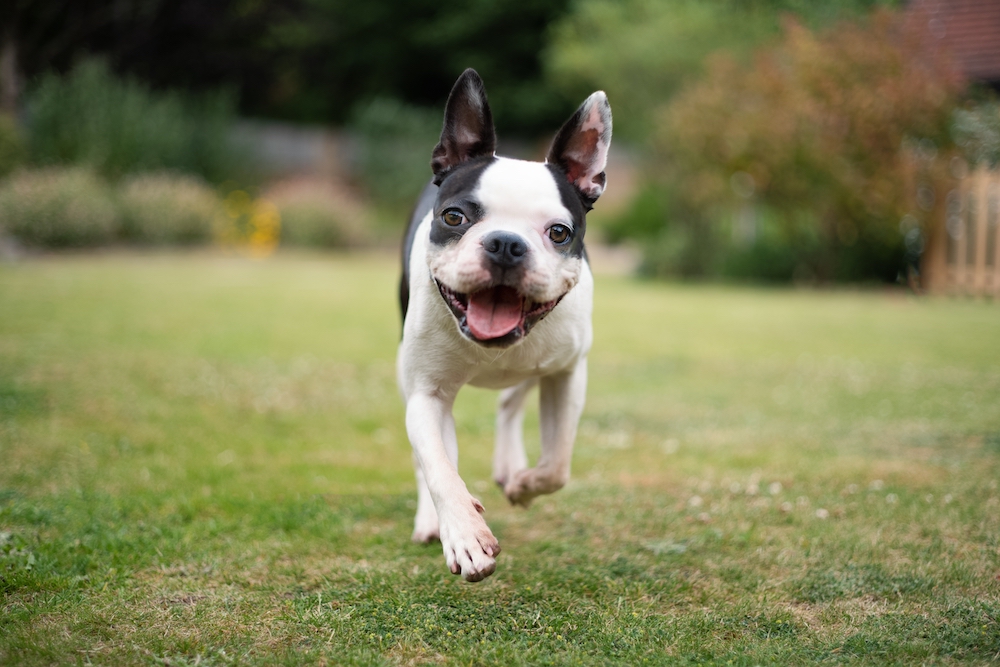
Don’t beg
If your dog doesn’t come when called, don’t repeat the word you’ve chosen. If they don’t come the first or second time you call them during training, go back a step or two for a refresher on the basics—and a reminder that, when they listen to you, a reward is waiting for them.
Repeating yourself when your dog isn’t responding is ineffective, and some trainers warn that this can “poison” your cue. Once your chosen word isn’t registering, the best bet you have for communicating with your dog is to pick a new one and be more consistent about how you use it.
Keegans points out that there are multiple ways for a cue to become poisoned. A dog may simply not be as responsive as you’d like. In those cases, as long as your dog still recognizes the word, she says you may be able to go back to easier stages of recall training and salvage the same term as a cue. On the other hand, if your dog reacts as if they associate the cue with something negative, you’ll need to pick a new word.
“I had somebody in class once who told me that she called her dog to her,” she remembers, “and then she plucked the hair out of his ears. After a while, that dog actively looked stressed when he heard that word—and so that was definitely a poisoned cue. If you’re seeing any response to the word ‘come’ that is like ducking away from you or their body language is subdued, I would say that’s a poisoned cue—get rid of it, start fresh.” And only do things your dog likes when they come to you, so they understand that listening was an excellent choice.
Speaking of which…
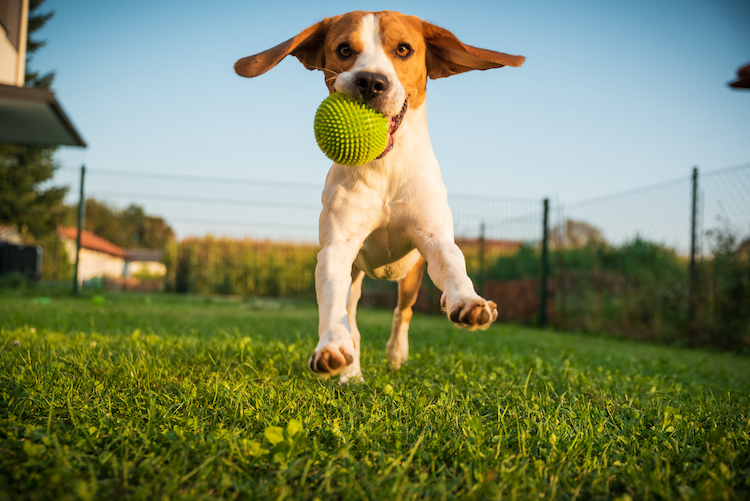
Pay the pupper
The world is full of things that dogs love: Sounds! Smells! Friends! If you want your dog to run back to you when you call, you need to deliver something better than what they’re already getting. They should be sure that lots of treats and pets are going to be behind door number one. So, when you’re training this skill, feel free to reward generously as long as they come when you call. That doesn’t mean treats alone—it also includes audible enthusiasm, affection, play, and whatever else your dog enjoys.
When you’re out, this also means not bringing your dog home right away when you call them. If you call your dog over in the park and they run back to you, praise them, give them a treat, pet them, and then let them run back out and play. Eventually you’re going to have to go home, but try your best not to associate listening to you with an end to the fun. If your dog ends up getting a bonus and continuing their party when they do what you want, they’ll be more apt to keep following your lead in the future.
Keegans advises making it clear that there’s a difference between when you call your dog over and when it’s time to go. She says that, when she’s leaving the park, she holds up her dogs’ leash and lets them know it’s time to depart instead of calling them over. However, she says that if you’re letting your dogs continue to play nine out of ten times, it shouldn’t do much damage if you do leave the park the tenth time. Having said that, she recommends giving them a bonus in those cases: “I would praise them for coming—do your normal reward… [and then add] ‘okay, we’re going to go now,’ put the leash on, and then give another reward for that—so there’s a little bit of a separation and they get that extra reward.”
Even once your dog has learned recall, you should continue rewarding them for coming to you—after all, the world is full of temptations. But your dog shouldn’t only be coming because you’re holding treats. Otherwise, you could find yourself in a tough spot when you forget them. To that end, Keegans says, “there should always be a reward—but once they’ve learned [recall] and they’re pretty consistent, mix in other rewards. So sometimes it might just be praise; sometimes you’re going to throw a ball for them; sometimes you’re going to take out a toy and let them go play again.” High-value treats—or whatever most motivates your dog—should be a part of that rotation, but shouldn’t come out every time.
You can also reward your dog for checking in with you even if you didn’t ask them to—if you find a behavior desirable and reward it, you’re likely to get more of it. So go ahead and tell your pup “good boy” or “good girl” and pass along a snack once in a while when they swing by to say hi during a play session.
If you want more rewards to dole out, there’s nothing wrong with repurposing good things that are part of your dog’s routine. “I always try to think of if I have something I’m going to give my dog anyway,” says Keegans. “If I’m going give him dinner anyway, or I’m going to invite him to go for a walk anyway, I call him—and then I give him the reward when I say ‘do you want to go for a walk?’”
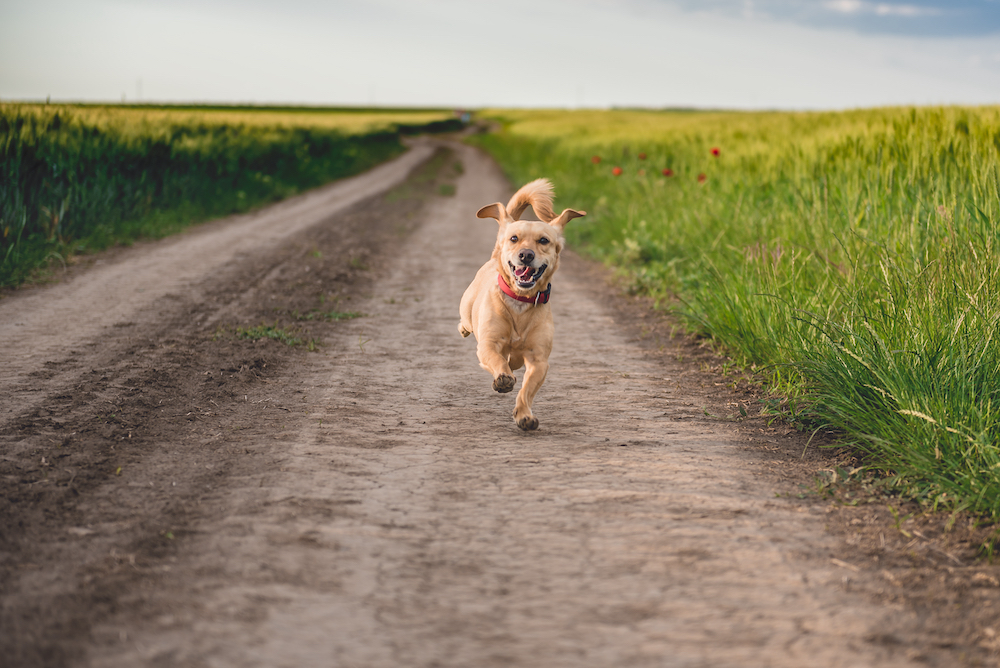
Ramp up the challenge
Once your dog is consistently listening to your cue, mix it up. Move forward at a slow pace—first increase the distance, then move rooms. Then venture outside, where the action is. You can keep your dog tethered to their leash or a long lead when you begin this phase. But know that dogs are aware of when they are and aren’t on leash—so even if your dog gets good at recall on a long lead, at some point they’ll need to learn the skill in a new context.
That’s why Keegans isn’t always a fan of the long line, though she concedes it can be a useful tool for those who need the insurance. “Even if [your dog is] coming to you really reliably on a long line,” she says, “when you take that long line off… it can change their behavior.”
As far as when to advance, Keegans likes to see a good rate of success before a dog graduates. “I always try to go on to the next step when I have 4 out of 5 successes at the current step,” she says. “So it doesn’t have to be perfect—but if I’m only getting 3 out of 5 positive responses, I stay at the same level. If I’m getting 2 or 1 positive responses out of five, it’s clearly too difficult, so I would make it easier.”
In addition to increasing the distance, add obstacles or tests of will. See if your dog will respond when there are tempting treats nearby or even in between you and them. Make sure that the cue works in different places and at different times.
In most cases, if you go through a few short training sessions a day, you should be able to reach the backyard within a week. But be patient. Naming common training mistakes for recall, Keegans says: “People try it in the house a couple of times and then immediately go to… the dog park or something like that. They make a very big step up in difficulty. That’s one mistake. The other is that they don’t practice in a quiet environment at all, and their expectations are too high off the bat… those are training mistakes that are common with everything, but recall is one of the most difficult ones because you’re really in competition with everything around you.”
Never stop practicing
Make sure that your dog gets frequent reps. Even once they seem to have mastered recall, it will help your case to call them back to you during every walk and play session to make sure that they remember, rewarding them when they do. This way, you can feel more confident when you absolutely need them to come back to you.

Remember: your dog is not a robot
You should work on recall with your dog, but know that there’s no such thing as total certainty that they’re going to come when you call. No training will simulate every possible scenario.
“You are always working against the distractions,” says Keegans. “If the dog is in the middle of wrestling with dogs at the dog park, the certainty is probably less. [The same goes for] if the dog is chasing a deer down a trail while you’re hiking. A lot of dogs who normally are reliable in every other situation won’t be reliable in that situation… they’re living beings just like us, so there’s no 100%. They’re not robots.”
This means that your dog shouldn’t be off leash if it would be hazardous to their safety, or someone else’s, for them to be distracted and not follow your cue right away.
Don’t feel like your dog has to go off leash
Recall is an essential skill for dogs who are going to play off-leash, and it can expand dogs’ recreational opportunities. But every dog is different, and going off-leash may be too risky for some of them. Those dogs can still have plenty of fun on leash and in enclosed areas.
“I think there’s no reason why a dog can’t be perfectly happy not having open areas to run around,” Keegans says. “You’re just probably going to have to get more creative with their enrichment.”
When you go on walks, let your dog sniff. Give them physical and mental exercise—they need both—and let them engage in as many natural dog behaviors as possible. Watch their body language to gauge their state of mind, and do more things that they enjoy. But as long as they seem happy, don’t worry if your dog can’t run around without a leash all the time.
